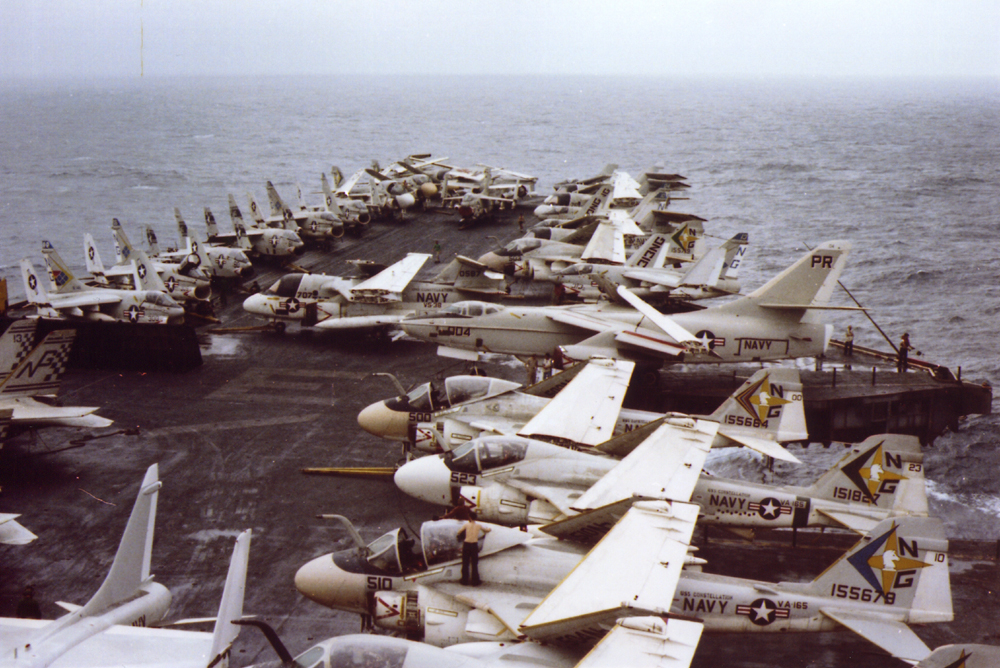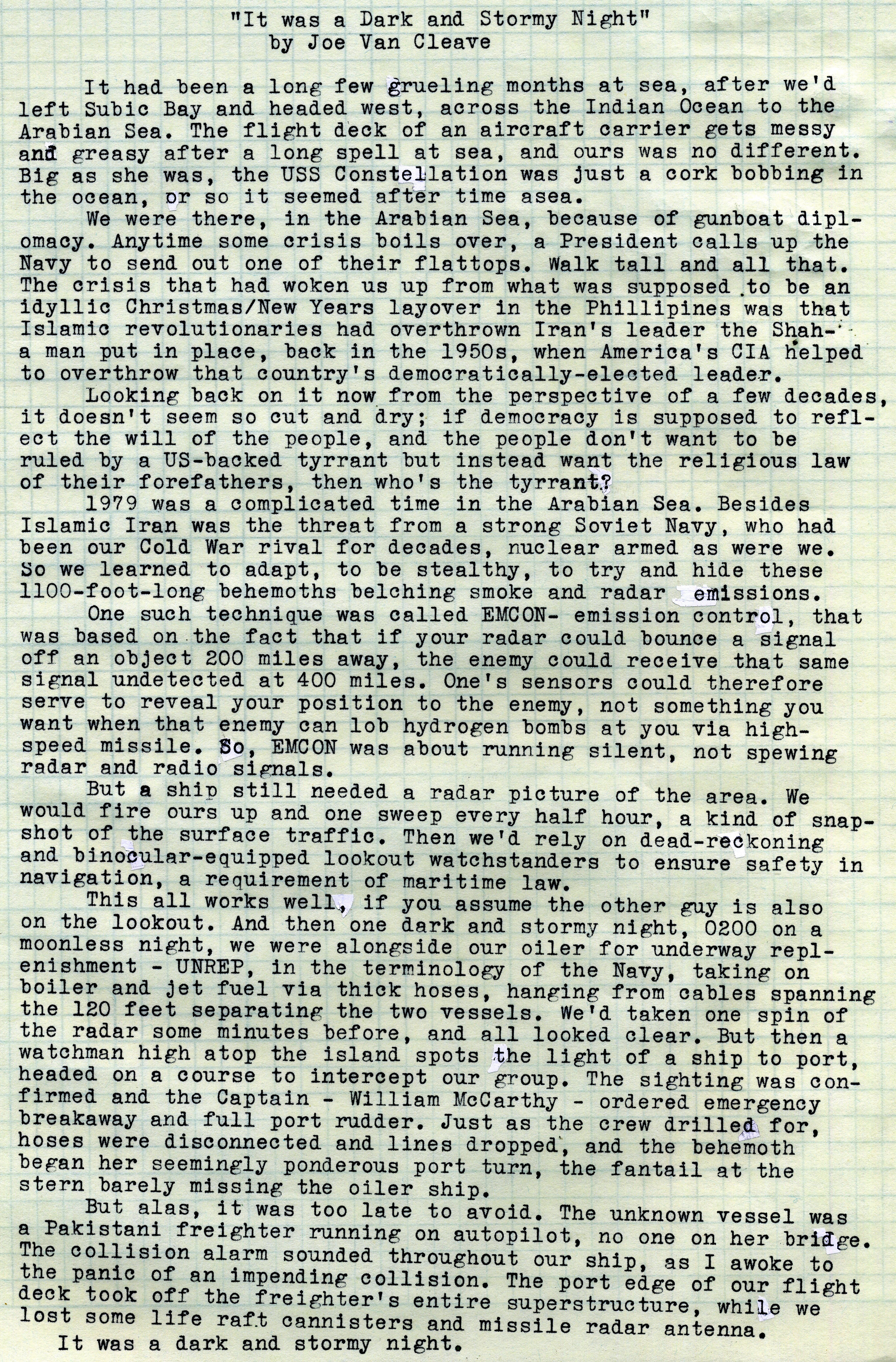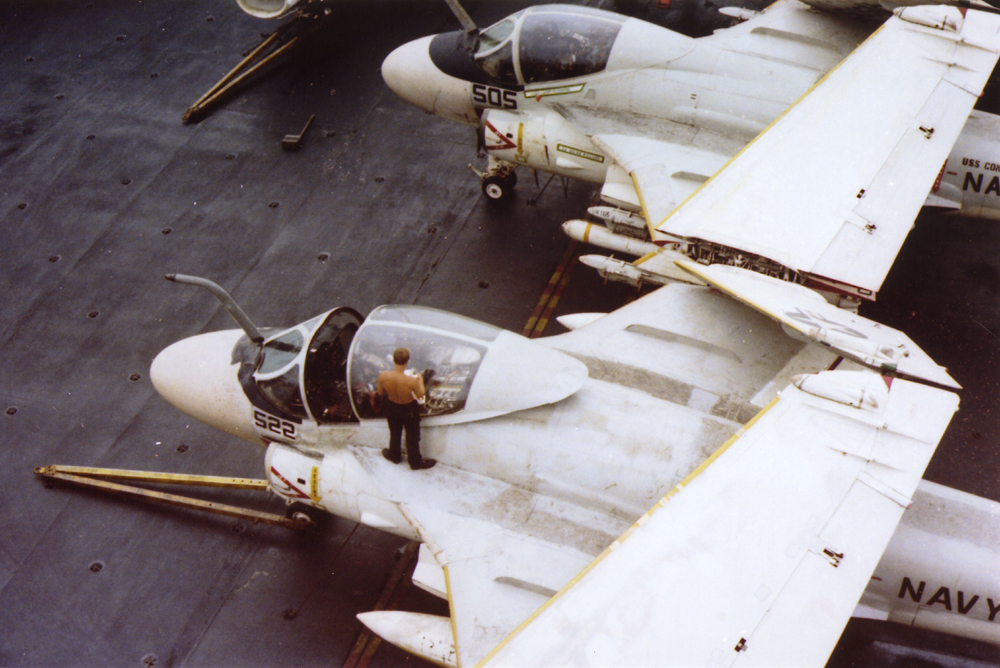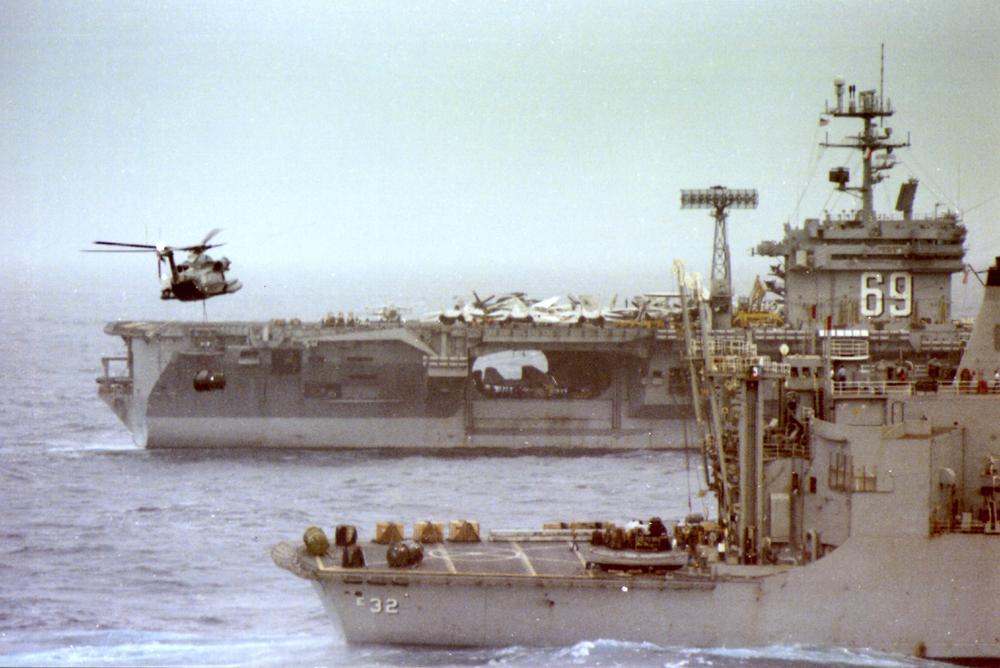It Was a Dark and Stormy Night

Haze-gray and underway

Post-Script: As it turns out, we had attempted to radio the Pakistani ship on an international hailing frequency prior to the collision; they responded but only too late, and attempted to navigate the gap between what they thought were the lights of two smaller ships, but was actually the darkness between our bow lights and superstructure. Despite their size, it seems you can hide an aircraft carrier, in the glum of a dark and stormy Arabian Sea night.
Subsequent to this event, the US Navy installed a navigation lighting mast on all its carriers, a tall pole fixed to the starboard catwalk between bow and superstructure, to serve as a visual indication that this is one huge ship, not two smaller vessels.
The freighter ship ended up being towed back to Karachi via US Navy oceangoing tug, and financial recompense was made. Our port Terrier missile radar antenna was retrieved from the deck of the freighter. The four-foot hole in our ship, high above the waterline and just below the flight deck, was merely a superficial wound; we remained at sea for several more weeks before turning east and returning to Subic Bay for repairs.
Captain McCarthy, one of the best skippers I served under, it is said didn't make the rank of Admiral because of this event, but did become a Commodore and served as head of the Naval Academy. His voice can be heard if you tour the USS Midway museum, in San Diego bay.
If you visit little old landlocked Albuquerque, you should visit the National Museum of Nuclear Science and History, formerly know as the National Atomic Museum and once located, prior to 9/11, on Kirtland Air Force Base. In the parking lot of the museum you will see a blue and white Terrier Missile launcher. This is because these systems were capable, as was the Connie's, of being nuclear armed. At the time of the collision, it was said that the Connie's was the last nuclear-certified Terrier system left in service. These employed a W30 1kt nuclear warhead and had a range of something like 40 nautical miles; designed in the atmosphere of nuclear idealism in the mid-1950s, before the advent of ICBMs, when it was thought that virtually every conventional tactical weapon could be nuclear armed. That was a different time.
Today, sold to a salvage company for $1, the Connie is being cut apart for scrap metal in the Galveston shipyards, while the governments of the United States and Iran remain at odds over their respective views of national sovereignty. Meanwhile, events like these that transpired during those long, dark nights of the Cold War remain but sea stories old men tell their grandkids.
Typing assignment via Underwood Portable, a newcomer to my collection.


Labels: memories, Navy Daze, Typing Assignments, Underwood Portable

5 Comments:
Great story and photos. I've always loved the U.S.N. even though I was never in it. I've never gotten to the Museum either. Work hours conflicted with the Museum hours when I worked in Albuquerque.
Now that's a dark and stormy night for sure (:
Excellent entry!
Joe were you in the Navy?
Cameron: Yes, those are old prints from the late 1970s.
Wonderful story Joe, great way to get the old Underwood back in service. Appreciate the period pictures as well. At first blush it seems unlikely that two, relatively slow moving giants of the sea would collide, but the USS Fitzgerald destroyer and ASX Crystal container ship collided in a similar incident off Japan just last month. That collision unfortunately took the lives of seven sailors.
Post a Comment
<< Home